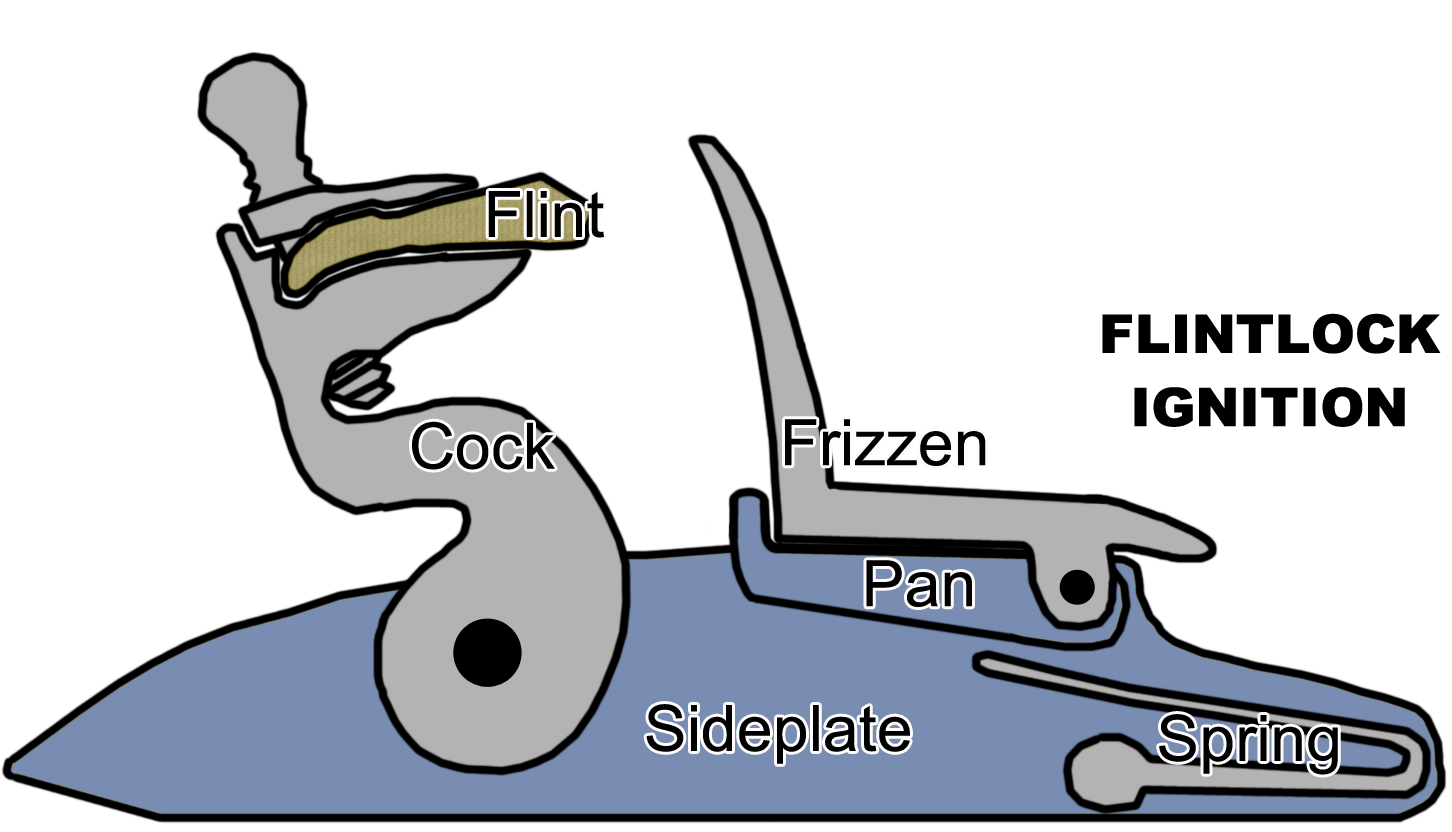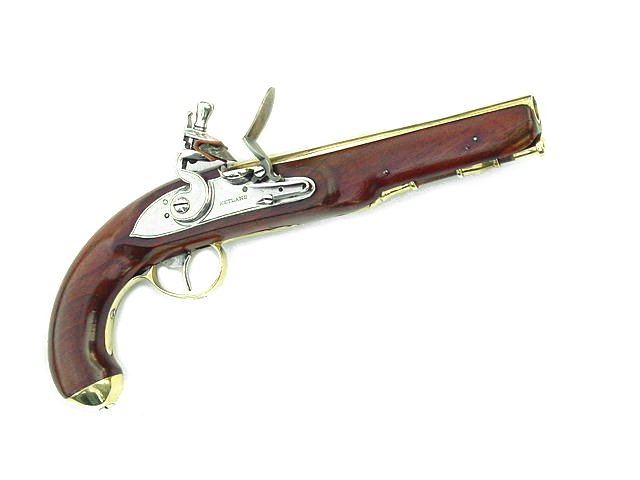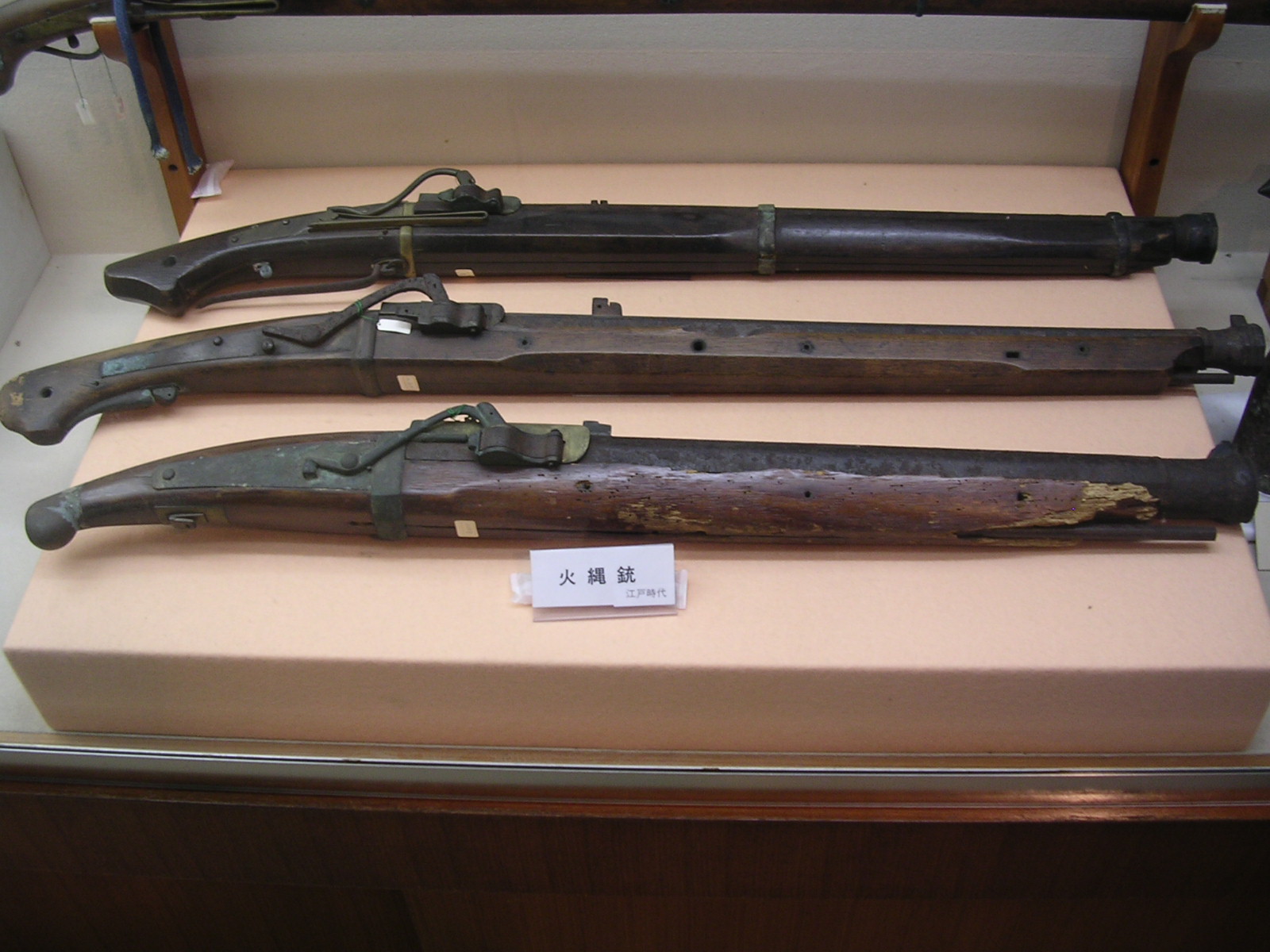|
Caplock
The percussion cap, percussion primer, or caplock, introduced in the early 1820s, is a type of single-use percussion ignition device for muzzle loader firearm locks enabling them to fire reliably in any weather condition. Its invention gave rise to the caplock mechanism or percussion lock system which used percussion caps struck by the hammer to set off the gunpowder charge in rifles and cap and ball firearms. Any firearm using a caplock mechanism is a percussion gun. Any long gun with a cap-lock mechanism and rifled barrel is a percussion rifle. Cap and ball describes cap-lock firearms discharging a single bore-diameter spherical bullet with each shot. Description The percussion cap is a small cylinder of copper or brass with one closed end. Inside the closed end is a small amount of a shock-sensitive explosive material such as mercury fulminate (discovered in 1800; it was the only practical detonator used from about the mid-19th century to the early 20th century). T ... [...More Info...] [...Related Items...] OR: [Wikipedia] [Google] [Baidu] [Amazon] |
Hammer (firearms)
The hammer is a part of a firearm that is used to strike the percussion cap/ primer, or a separate firing pin, to ignite the propellant and fire the projectile. It is so called because it resembles a hammer in both form and function. The hammer itself is a metal piece that forcefully rotates about a pivot point. The term tumbler can refer to a part of the hammer or a part mechanically attached to the pivot-point of the hammer, depending on the particular firearm under discussion (see half-cock). According to one source the term tumbler is synonymous with hammer. Evolution In the development of firearms, the flintlock used flint striking steel to produce sparks and initiate firing by igniting the gunpowder used as a propellant. The flint was fixed to a swinging arm called the ''cock''. Prior to firing, the cock was held rearward under spring tension. Pulling the trigger allowed the cock to rotate forward at a speed sufficient to produce sparks when it struck the steel frizzen. ... [...More Info...] [...Related Items...] OR: [Wikipedia] [Google] [Baidu] [Amazon] |
Firearm
A firearm is any type of gun that uses an explosive charge and is designed to be readily carried and operated by an individual. The term is legally defined further in different countries (see legal definitions). The first firearms originated in 10th-century China, when bamboo tubes containing gunpowder and pellet projectiles were mounted on spears to make the portable fire lance, operable by a single person, which was later used effectively as a shock weapon in the siege of De'an in 1132. In the 13th century, fire lance barrels were replaced with metal tubes and transformed into the metal-barreled hand cannon. The technology gradually spread throughout Eurasia during the 14th century. Older firearms typically used black powder as a propellant, but modern firearms use smokeless powder or other explosive propellants. Most modern firearms (with the notable exception of smoothbore shotguns) have rifled barrels to impart spin to the projectile for improved flight stabili ... [...More Info...] [...Related Items...] OR: [Wikipedia] [Google] [Baidu] [Amazon] |
Flintlock
Flintlock is a general term for any firearm that uses a flint-striking lock (firearm), ignition mechanism, the first of which appeared in Western Europe in the early 16th century. The term may also apply to a particular form of the mechanism itself, also known as the ''flintlock mechanism, true flintlock'', that was introduced in the early 17th century, and gradually replaced earlier firearm-ignition technologies, such as the matchlock, the wheellock, and the earlier flintlock mechanisms such as the snaplock and snaphaunce. The true flintlock continued to be in common use for over two centuries, replaced by percussion cap and, later, the Cartridge (firearms), cartridge-based systems in the early-to-mid 19th century. Although long superseded by modern firearms, flintlock weapons enjoy continuing popularity with Black powder, black-powder shooting enthusiasts. History French court gunsmith Marin le Bourgeoys made a firearm incorporating a flintlock mechanism for King Louis XIII ... [...More Info...] [...Related Items...] OR: [Wikipedia] [Google] [Baidu] [Amazon] |
Flintlock Mechanism
The flintlock mechanism is a type of lock (firearm), lock used on muskets, rifles, and pistols from the early 17th to the mid-19th century. It is commonly referred to as a "flintlock" (without the word ''mechanism''). The term is also used for the weapons themselves as a whole, and not just the lock mechanism. The flintlock mechanism, also known as the true flintlock, was developed in France in the early 17th century. It quickly replaced earlier technologies, such as the matchlock, wheellock and earlier flintlocks. It continued to be in common use for over two centuries, until it was finally replaced by the percussion lock. History Flintlock firing mechanisms made their appearance in the 16th century in the form of the snaplock, the snaphance, the miquelet, and the doglock. The so-called ''true flintlock'' was developed in France in the early 17th century. Though its exact origins are not known, credit for the development of the true flintlock is usually given to Marin le Bourgeo ... [...More Info...] [...Related Items...] OR: [Wikipedia] [Google] [Baidu] [Amazon] |
Breech-loading Weapon
A breechloader is a firearm in which the user loads the ammunition from the breech end of the barrel (i.e., from the rearward, open end of the gun's barrel), as opposed to a muzzleloader, in which the user loads the ammunition from the ( muzzle) end of the barrel. The vast majority of modern firearms are generally breech-loaders, while firearms made before the mid-19th century were mostly smoothbore muzzle-loaders. Only a few muzzleloading weapons, such as mortars, rifle grenades, some rocket launchers, such as the Panzerfaust 3 and RPG-7, and the GP series grenade launchers, have remained in common usage in modern military conflicts. However, referring to a weapon explicitly as breech-loading is mostly limited to weapons where the operator loads ammunition by hand (and not by operating a mechanism such as a bolt-action), such as artillery pieces or break-action small arms. Breech-loading provides the advantage of reduced reloading time because it is far quicker to load t ... [...More Info...] [...Related Items...] OR: [Wikipedia] [Google] [Baidu] [Amazon] |
Fulminate
Fulminates are chemical compounds which include the fulminate ion (). The fulminate ion is a pseudohalic ion because its charge and reactivity are similar to those of the halogens. The name is derived from the Latin ''fulminātus'', meaning to explode like lightning, and reflects that fulminate salts are friction-sensitive explosives due to the instability of the ion. The best known is mercury(II) fulminate, which has been used as a primary explosive in detonators. Fulminates can be formed from metals, such as silver and mercury, dissolved in nitric acid, and reacted with ethanol. The weak single nitrogen-oxygen bond is responsible for their instability. Nitrogen very easily forms a stable triple bond to another nitrogen atom, forming nitrogen gas. Historical notes Fulminates were discovered by Edward Charles Howard in 1800. The use of fulminates for firearms was first demonstrated by a Scottish minister, Alexander John Forsyth, who patented his scent-bottle lock in 1807; th ... [...More Info...] [...Related Items...] OR: [Wikipedia] [Google] [Baidu] [Amazon] |
Anvil
An anvil is a metalworking tool consisting of a large block of metal (usually Forging, forged or Steel casting, cast steel), with a flattened top surface, upon which another object is struck (or "worked"). Anvils are massive because the higher their inertia, the more efficiently they cause the energy of striking tools to be transferred to the work piece. In most cases the anvil is used as a forge, forging tool. Before the advent of modern welding technology, it was the primary tool of metal workers. The great majority of modern anvils are made of cast steel that has been heat treated by either Case-hardening, flame or Induction_hardening, electric induction. Inexpensive anvils have been made of cast iron and low-quality steel, but are considered unsuitable for serious use, as they deform and lack rebound when struck. The largest single piece tool steel anvil that is heat treated is 1600 pounds. This anvil was made in 2023 by Oak Lawn Blacksmith. There are larger anvils tha ... [...More Info...] [...Related Items...] OR: [Wikipedia] [Google] [Baidu] [Amazon] |
Matchlock
A matchlock or firelock is a historical type of firearm wherein the gunpowder is ignited by a burning piece of flammable cord or twine that is in contact with the gunpowder through a mechanism that the musketeer activates by pulling a lever or Trigger (firearms), trigger with their finger. This firing mechanism was an improvement over the hand cannon, which lacked a trigger and required the musketeer or an assistant to apply a match directly to the gunpowder by hand. The matchlock mechanism allowed the musketeer to apply the match himself without losing his concentration. Description The classic matchlock gun held a burning slow match in a clamp at the end of a small curved lever known as the ''serpentine''. Upon the pull of a lever (or in later models a trigger) protruding from the bottom of the gun and connected to the serpentine, the clamp dropped down, lowering the smoldering match into the flash pan and igniting the priming powder. The flash from the primer traveled throug ... [...More Info...] [...Related Items...] OR: [Wikipedia] [Google] [Baidu] [Amazon] |
Frizzen
The frizzen, historically called the "hammer" or the steel,This may appear anomalous since, in later firearm designs (e.g. percussion locks), the component operating in the same manner as the ''cock'' is called the hammer. is an L-shaped piece of steel hinged at the front used in flintlock firearms. The frizzen is held in one of two positions, opened or closed, by a leaf spring. When closed, it is positioned over the flash pan so as to enclose a small priming charge of black powder next to the flash hole that is drilled through the barrel into which the main charge has been loaded. When the trigger is pulled, the cock, which holds a shaped piece of flint clamped in a set of jaws with a scrap of leather or thin piece of lead, snaps forward causing the flint to scrape downward along the frizzen's face (historically called the 'battery'), throwing it forward into the open position and exposing the priming powder. The flint scraping along the steel causes a shower of sparks to be throw ... [...More Info...] [...Related Items...] OR: [Wikipedia] [Google] [Baidu] [Amazon] |
Steel
Steel is an alloy of iron and carbon that demonstrates improved mechanical properties compared to the pure form of iron. Due to steel's high Young's modulus, elastic modulus, Yield (engineering), yield strength, Fracture, fracture strength and low raw material cost, steel is one of the most commonly manufactured materials in the world. Steel is used in structures (as concrete Rebar, reinforcing rods), in Bridge, bridges, infrastructure, Tool, tools, Ship, ships, Train, trains, Car, cars, Bicycle, bicycles, Machine, machines, Home appliance, electrical appliances, furniture, and Weapon, weapons. Iron is always the main element in steel, but other elements are used to produce various grades of steel demonstrating altered material, mechanical, and microstructural properties. Stainless steels, for example, typically contain 18% chromium and exhibit improved corrosion and Redox, oxidation resistance versus its carbon steel counterpart. Under atmospheric pressures, steels generally ... [...More Info...] [...Related Items...] OR: [Wikipedia] [Google] [Baidu] [Amazon] |







